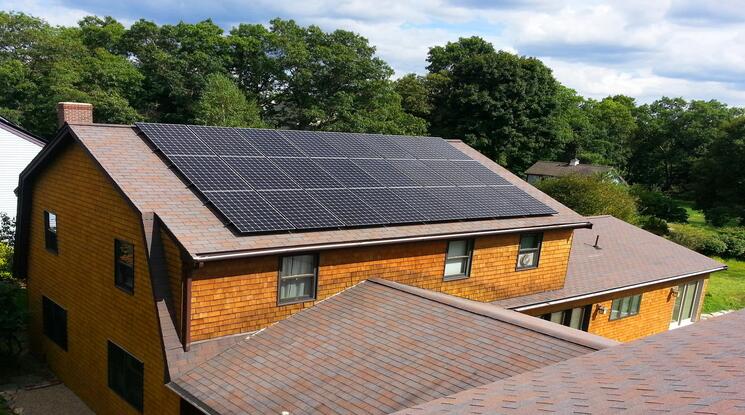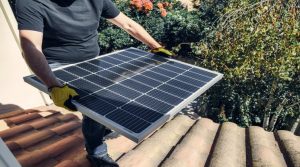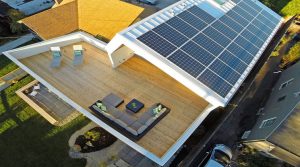In the quest for a sustainable and eco-friendly future, renewable energy sources have emerged as the frontrunners to replace our reliance on fossil fuels. Among these sources, solar panels in Virginia Beach and energy, along with wind, hydro, and geothermal energy, have garnered considerable attention. This blog will delve into a detailed comparison of solar energy with these other renewable sources, highlighting their respective strengths and weaknesses.
Solar Energy: Capturing the Power of the Sun
Strengths of Solar Energy
1. Abundant and Inexhaustible: Solar Panels in Virginia derives its power from the sun, which is an inexhaustible source of energy. The sun radiates more energy in one hour than the entire world consumes in a year, making solar power a virtually unlimited resource.
2. Scalability: Solar energy systems come in a range of sizes, from small rooftop installations to massive solar farms. This scalability makes it accessible to both residential and commercial consumers.
3. Low Environmental Impact: Solar installation generation is clean and emits no greenhouse gases. The environmental impact is minimal during operation, and solar panels have a relatively long lifespan, reducing waste and promoting sustainability.
4. Off-Grid Potential: Solar power can be harnessed in remote areas, making it a reliable source of electricity for off-grid applications, like powering rural homes or water pumps in developing regions.
5. Cost-Effective: Solar technology has seen a significant decrease in the cost of production and installation, making it an attractive option for consumers. Government incentives and tax credits further reduce the financial burden of adopting solar energy.
Weaknesses of Solar Energy
1. Intermittency: Solar power generation is subject to weather conditions and the time of day, resulting in intermittent energy production. Nighttime and cloudy days can lead to reduced power output.
2. Land and Space Requirements: Large-scale solar installations require substantial land or space, which might lead to conflicts with other land uses, such as agriculture or conservation.
3. Energy Storage Challenges: To mitigate intermittency, energy storage solutions, such as batteries, are necessary. However, these technologies can be costly and have environmental considerations of their own.
Wind Energy: Harnessing the Power of the Breeze
Strengths of Wind Energy
1. High Energy Output: Wind turbines are capable of producing significant amounts of electricity, especially in areas with strong and consistent wind patterns.
2. Sustainability: Wind energy is clean, emitting no greenhouse gases or pollutants during operation. It has a relatively small environmental footprint.
3. Complementary with Solar: Wind patterns often peak when solar generation is low, providing a complementary energy source that helps balance the grid.
Weaknesses of Wind Energy
1. Visual and Noise Impact: Wind turbines can be seen as an eyesore, and the noise they generate may cause concerns for nearby residents.
2. Intermittency: Like solar energy, wind power is intermittent and depends on weather conditions. It is also location-dependent, limiting its applicability in certain regions.
3. Land Use Concerns: Wind farms require significant land area, which can be contentious in densely populated or environmentally sensitive areas.
Hydro Energy: Tapping the Power of Flowing Water
Strengths of Hydro Energy
1. Reliable and Steady Output: Hydroelectric power plants provide a stable and consistent energy supply as they are not dependent on weather conditions.
2. High Energy Density: Water is denser than air, allowing hydroelectric plants to generate substantial energy in a compact space.
3. Long Lifespan: Hydroelectric infrastructure can last for several decades, resulting in a sustainable and long-term energy source.
Weaknesses of Hydro Energy
1. Environmental Impact: The construction of dams can disrupt ecosystems, alter water courses, and have adverse effects on local flora and fauna.
2. Limited Locations: Not all regions have access to suitable water resources for hydroelectric power generation, limiting its geographical applicability.
3. Upfront Costs: Building hydroelectric plants, particularly large-scale dams, can be capital-intensive, making it less accessible for smaller entities.
Geothermal Energy: Tapping Earth’s Heat
Strengths of Geothermal Energy
1. Steady and Reliable: Geothermal energy provides a stable source of heat and power, unaffected by weather conditions.
2. Low Environmental Impact: Geothermal power generation is clean and emits minimal greenhouse gases. It has a relatively small environmental footprint.
3. Efficient Use of Space: Geothermal power plants are compact and efficient, requiring less land compared to solar or wind farms.
Weaknesses of Geothermal Energy
1. Location-Dependent: Geothermal energy is only feasible in regions with substantial geothermal heat sources, limiting its global applicability.
2. Resource Depletion: Over-extraction of geothermal fluids can lead to a decline in reservoir pressure, potentially reducing energy output over time.
3. High Initial Investment: Developing geothermal power plants can be costly due to the drilling and infrastructure requirements.
In conclusion, the choice between solar energy and other renewable sources like wind, hydro, and geothermal energy depends on various factors, including location, environmental impact, scalability, and budget. Each source has its own set of advantages and drawbacks, and the most suitable option may vary from one situation to another. As we strive to transition towards a sustainable energy future, understanding the strengths and weaknesses of these renewable sources is crucial in making informed decisions for a cleaner and greener planet.




